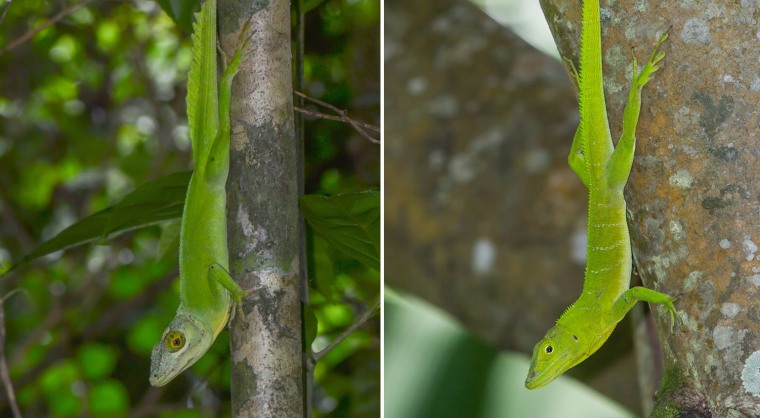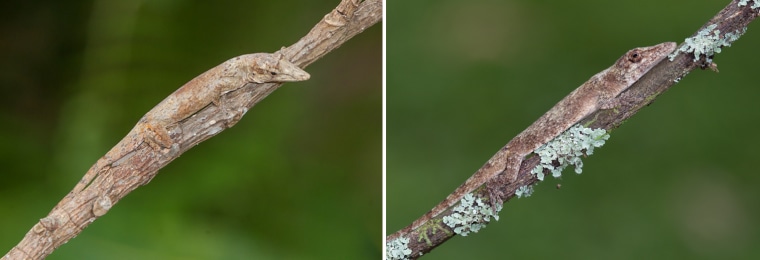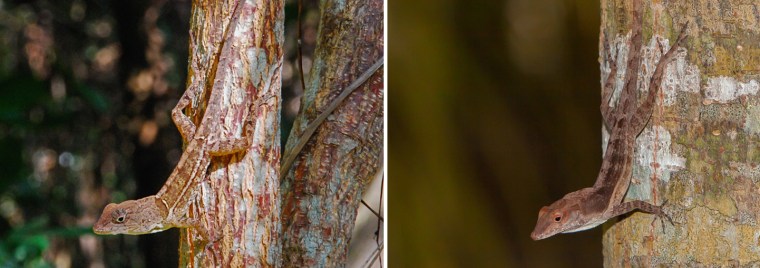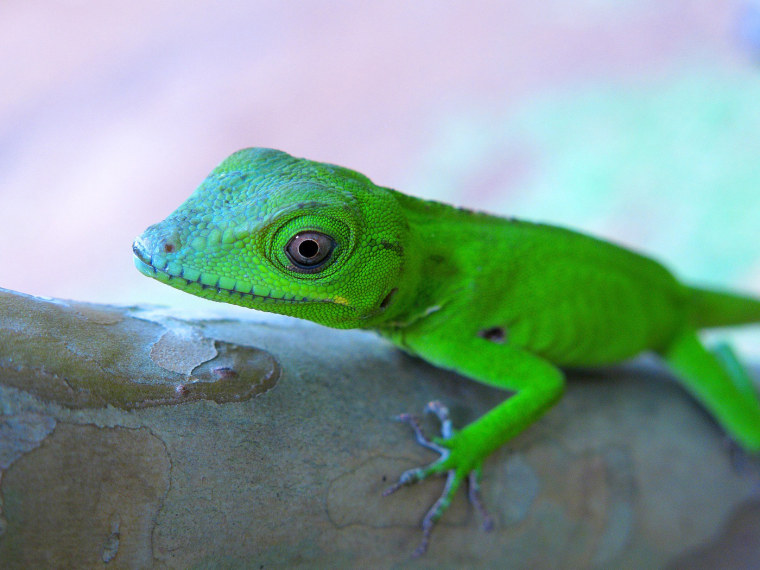
Visit the Caribbean islands and you'll find the Anoles lizards hard to miss. You might run into one variety — the neon-green, crested, tree-top climbers — in Jamaica or Puerto Rico, but find them once again Hispaniola and Cuba, that look so similar you'd swear they were the same species.
They're not. But it's not just coincidence that the lizards look so similar. It's evolution, say researchers.
Whether evolution can turn out the same kinds of creature more than once has been a question that has been challenging ecologists and thinkers for decades. Say we rewound time, and took the history of our planet back some million years. When we hit play, would we end up with the same kind of species and diversity that we have today? If we went back to the extinction of the dinosaurs, would mammals and humans have evolved again?

One group, led by Stephen Jay Gould, trusts the caprice and unpredictability of evolutionary events. Evolution can't direct a scene the same way more than once, they say. The opposing camp will tell you that faced with a certain set of environmental conditions, animals will evolve similar tricks.
The family of Anoles lizards in the Caribbean islands are proof that evolution can produce the same kind of peculiarities in body forms. In fact, in each of the four islands of the Greater Antilles, evolution has repeated itself four different times.
In the July 18 issue of Science, Jonathan Losos, an ecologist at Harvard University, and his colleagues show is that each time the lizards encountered one of the four islands, they grew longer legs or stickier toes or skinnier tails to conquer stony rock faces, low grassy habitats or high leafy ones. Each time, they say, evolution produced the same result.
"What's great about these islands is that they're a natural experiment," Losos told NBC News. "You're not restarting the clock, but you're starting it four times."
In fact, "if you drop a lizard on one of these islands millions of years ago, you would get a very similar outcome every time you did it," he said. He’d bet that if a fifth island magically appeared in the sea near the four, a couple of lizards dropped on it would multiply and diversify into the very same kinds of varieties that were seen on the other islands. Give them a few million years.

In the new paper, Losos and his colleagues match up statistical analysis of the similarities of body plans of the lizards — tail lengths, body widths, skin shades — to a DNA-based charting of the lizards' ancestry.
They show that unrelated lizards, stranded separately on four of the islands, independently evolved the same characteristics. Twig-dwellers grew long and slender bodies and short legs and tails. Bark dwellers on four islands grew out patchy, mottled coats and muscular legs that allow them to bolt after prey and out of danger.
For favorable habitats, "the environment has given the Anoles a small number of options," Dolph Schluter, an ecologist at the University of British Columbia in Vancouver, told NBC News. "But they're really great options — and [the lizards] take them again and again and again."
And it wasn't just happenstance or coincidence, Losos' numbers show — the similarity is greater than plain ol' chance could have managed.

"They have a very robust statistical framework" that leads to "the conclusion is that evolution is repeatable," David Reznick, a biologist at the University of California, Riverside, who was not involved with the work, told NBC News. "There are elements that happened on the islands of the Greater Antilles that happened again and again."
The Anole lizards arrived in the Caribbean from South America about 40 million years ago. They likely landed first on Hispaniola or Cuba. Perhaps they floated in on a drifting tree stump, Losos doesn't know for sure.
Not all flavors of lizards are found on all the islands. An Anole that looks like a chameleon and eats snails is native only to Cuba. A spindly-legged Anole that climbs rock walls is also found nowhere else. Only in Hispaniola will you find the Anole that changed its color and body shape to make its home among the leaf litter.
Reznick pointed out that Losos had made a case for the similar body plans of lizards across islands about 20 years ago. But this time, he considered the unique lizards found on only one island too, and was still able to demonstrate statistically that evolution had favored the same bag of tricks more than once.
Since the islands are close by, and have a similar range of habitats, this is a special study case, a localized one. While neither Reznick nor Losos are opposed to the idea that convergent evolution can take place on a more global scale — that unrelated species in different continents evolved similar body plans — they agree that fashioning such experiments, or finding examples to study, will be much harder.
The authors of "Exceptional Convergence on the Macroevolutionary Landscape in Island Lizard Radiations" include Luke Mahler, Travis Ingram and Liam Revell in addition to Jonathan Losos.
Nidhi Subbaraman writes about science and technology. Follow her on Facebook, Twitter and Google+.
